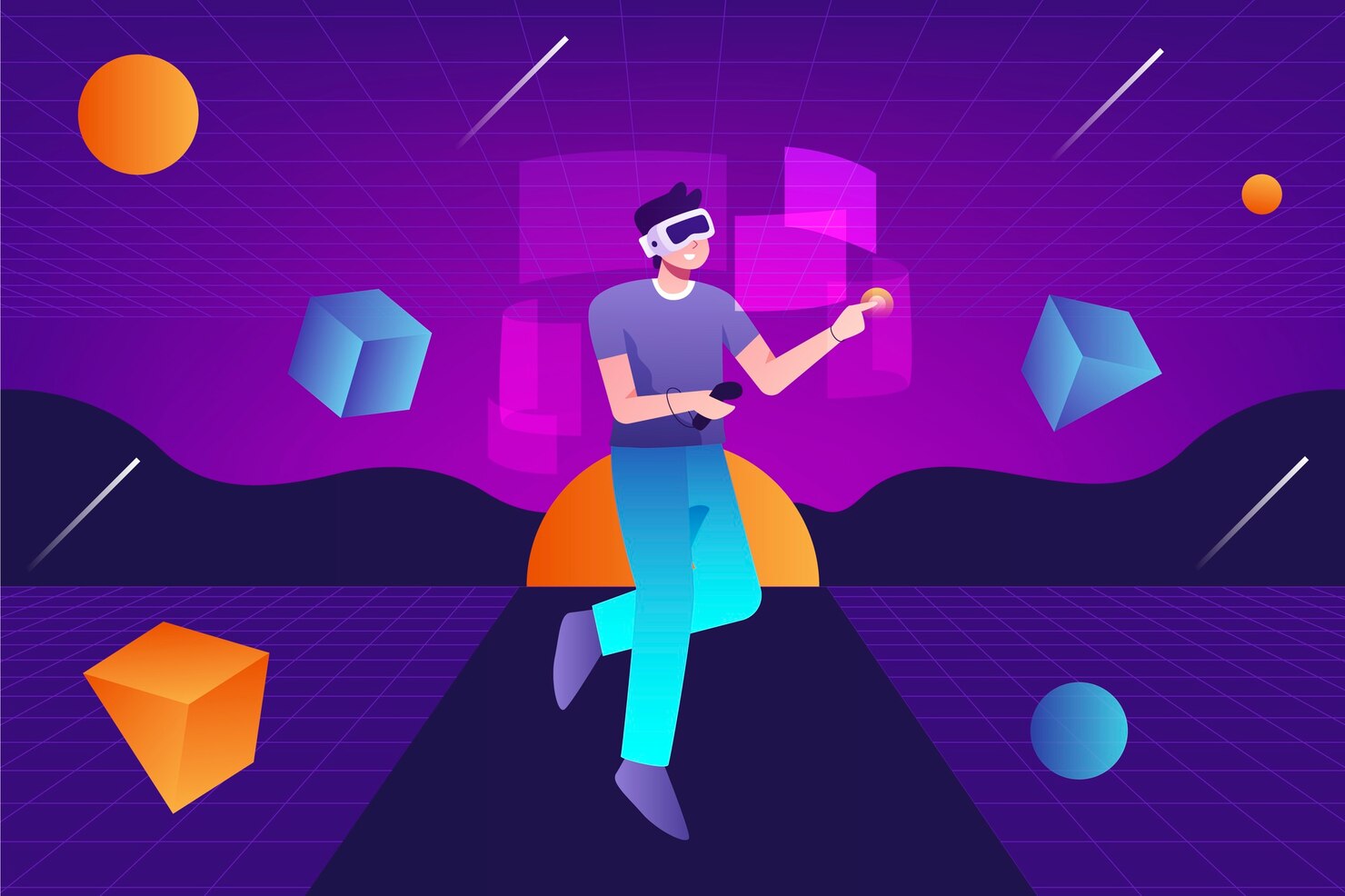The gaming industry has always been at the forefront of technological innovation, pushing the boundaries of what is possible in the virtual world. From the early days of Pong and Pac-Man to the immersive worlds of Fortnite and Minecraft, the evolution of gaming has been nothing short of extraordinary. Now, we stand on the cusp of another gaming revolution, one that promises to transform the way we play, interact, and even earn within virtual realms. This revolution is known as Web 3.0 Gaming.
The Dawn of Web 3.0 Gaming
Web 3.0 gaming is not just an incremental step forward; it represents a seismic shift in how games are developed, played, and experienced. At its core, Web 3.0 gaming leverages the principles and technologies of Web3, a term that encompasses blockchain, decentralized systems, and the idea of a trustless, peer-to-peer internet. Let’s take a deep dive into the fascinating world of Web 3.0 gaming (10 Most Popular Web 3.0 Games), exploring its key components and the ways it’s poised to disrupt the gaming industry.
Blockchain: The Backbone of Web 3.0 Gaming
Blockchain technology, popularized by cryptocurrencies like Bitcoin and Ethereum, is the foundation upon which Web3 gaming is built. At its essence, a blockchain is a decentralized, tamper-resistant ledger that records transactions across a network of computers. In the context of gaming, this means that every in-game asset, whether it’s a sword, a skin, or a virtual piece of land, can be represented as a unique digital token on the blockchain.

These tokens, often referred to as Non-Fungible Tokens (NFTs), are provably scarce and distinguishable from one another. This means that each item in a Web3 game can have a distinct history, ownership record, and value. No longer are in-game assets confined to the walled gardens of individual games; they can be bought, sold, and traded across different games and platforms, creating a dynamic and interconnected virtual economy.
True Ownership and Interoperability
One of the most significant advantages of Web3 gaming is the concept of true ownership. In traditional gaming, you might spend hours, days, or even years accumulating valuable in-game items, only to have them locked within the confines of a specific game. In a Web3 game, you have real ownership of your assets. If you acquire a rare sword in one game, you can potentially use it in another compatible game or sell it on a blockchain-based marketplace for cryptocurrency.
This shift in ownership empowers players and changes the way they perceive and engage with virtual worlds. It’s no longer just about accumulating items within a single game; it’s about building a digital asset portfolio that transcends individual gaming experiences.
Furthermore, the interoperability of Web 3.0 gaming means that players can seamlessly move between different games and ecosystems. Imagine starting your gaming journey in a fantasy role-playing game, where you amass a collection of powerful weapons. Then, you decide to venture into a futuristic sci-fi game, bringing your prized arsenal with you. This level of cross-game continuity is a game-changer, both for players and developers.
Play-to-Earn: Gaming as a Source of Income
Web 3.0 gaming introduces the revolutionary concept of “play-to-earn.” Traditionally, gaming has been a form of entertainment and recreation, but Web3 gaming flips the script. With the integration of blockchain and cryptocurrencies, players can earn real-world value by participating in games. Here’s how it works:
1. Earning Through Gameplay: In Web3 games, players can earn cryptocurrencies or NFTs by achieving in-game goals, completing quests, or participating in various activities. This means that the time and effort you invest in a game can have tangible rewards.
2. Ownership and Trading: As mentioned earlier, the assets you acquire in Web 3.0 games are truly yours. You can choose to hold them, sell them on secondary markets, or trade them with other players. This dynamic economy adds a whole new layer of depth to the gaming experience.
3. New Economic Opportunities: For skilled players or dedicated gamers, Web 3.0 gaming can become a source of income. Some players have even turned gaming into a full-time career, earning substantial incomes through tournaments, streaming, and in-game activities.
The play-to-earn model not only transforms gaming into a potentially lucrative endeavor but also democratizes access to these opportunities. It’s no longer reserved for professional esports players; anyone with skill and dedication can participate.
Community Governance: Players as Stakeholders
In the world of Web 3.0 gaming, some games implement decentralized autonomous organizations (DAOs) that give players a direct say in the game’s development and direction. DAOs are essentially smart contracts that manage the governance of a game. Players who hold specific tokens can propose and vote on changes to the game, such as new features, balance adjustments, or in-game events.
This concept of community-driven governance turns players into stakeholders, fostering a sense of ownership and responsibility for the games they love. It also ensures that decisions about the game’s future are made collectively rather than by a centralized authority.
Why Web 3.0 Gaming Matters
The emergence of Web 3.0 gaming is not just a curiosity for gaming enthusiasts; it has the potential to disrupt the entire gaming industry. Here are some compelling reasons why Web 3.0 gaming matters:
1. Ownership and Control
Web3 gaming provides players with true ownership and control over their in-game assets. This reduces the risk of assets becoming obsolete or unsupported by developers. Players no longer have to rely on the goodwill of game companies to preserve the value of their investments.
2. Transparency
Blockchain technology ensures transparency in the creation and distribution of in-game items. Cheating and fraud become more difficult in a trustless, decentralized environment. Players can trust that the scarcity and provenance of their items are verifiable.
3. Economic Opportunities
Web3 gaming introduces a new dimension to gaming by offering economic opportunities. Play-to-earn models enable players to earn income while doing what they love. This can be particularly empowering for individuals in regions with limited economic opportunities.
4. Cross-Platform Play
Interoperability allows players to use their assets across different games and platforms. This creates a seamless gaming experience and encourages innovation as developers collaborate on shared ecosystems.
5. Community Engagement
Community governance ensures that players have a voice in the evolution of their favorite games. It fosters a sense of community and collaboration, with players actively participating in shaping the game’s future.
The Challenges Ahead
While the promise of Web3 gaming is undeniable, it’s important to acknowledge that this transformative shift comes with its own set of challenges:
1. Scalability
Blockchain networks, especially Ethereum, face scalability issues that can result in high fees and slow transactions. For Web3 gaming to reach its full potential, solutions for these challenges must be found.
2. User Experience
The user experience in Web3 gaming can be daunting for newcomers. Managing wallets and private keys and interacting with blockchain networks can be complex. Simplifying these processes is crucial for mainstream adoption.
3. Regulatory Uncertainty
As Web 3.0 gaming blurs the lines between virtual and real-world assets, it raises regulatory questions. Different jurisdictions may have varying approaches to taxation, licensing, and enforcement.
4. Sustainability
The energy consumption associated with blockchain networks, particularly proof-of-work networks like Bitcoin and Ethereum, has raised concerns about sustainability. Transitioning to more energy-efficient consensus mechanisms is an ongoing challenge.
The Future of Web 3.0 Gaming
Web 3.0 gaming represents a paradigm shift in the gaming industry. It redefines how players interact with virtual worlds and in-game assets. It empowers players with true ownership, economic opportunities, and a say in the development of the games they love. As Web3 gaming continues to evolve, it will shape the future of gaming in ways we can only begin to imagine.
Imagine a future where your virtual adventures not only provide entertainment but also financial security. Picture a world where your in-game achievements are celebrated as genuine accomplishments. Envision a gaming landscape where communities of players collaborate to shape the virtual worlds they inhabit.
Web3 gaming is not a distant dream; it’s a journey worth embarking upon. As we navigate the challenges and opportunities of this brave new world, one thing is certain: the power of Web3 gaming is poised to unleash a wave of creativity, innovation, and economic empowerment that will redefine the gaming experience for generations to come. So, whether you’re a seasoned gamer or just curious about the future, keep an eye on Web3 gaming—it’s where the next gaming revolution begins.
Conclusion
Web 3.0 gaming represents a paradigm shift in the gaming industry, redefining how players interact with virtual worlds and in-game assets. It offers true ownership, economic opportunities, and community-driven development, making it an exciting frontier for gamers and developers alike. As Web3 gaming continues to evolve, it will shape the future of gaming in ways we can only begin to imagine. So, whether you’re a seasoned gamer or just curious about the future, keep an eye on Web 3.0 gaming—it’s a journey worth embarking upon.

